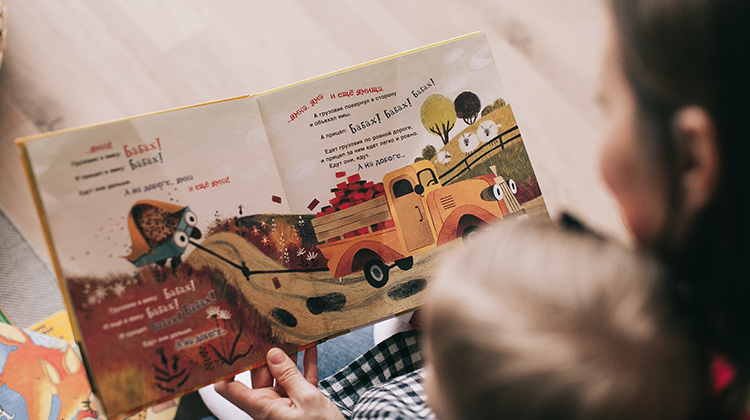Bedtime Stories a Casualty of Busy Lives

The bedtime story is one way reading skills have been built in children, but the tradition is rapidly falling by the wayside as only 25 per cent of Aussie parents now read to their children once a week or not at all.
Time poverty is one reason as are parents’ own literacy skills, more than one in two (56 per cent) parents said they were nervous about reading to their child because of their own reading ability.
The research from Oxford Children’s Language Australia showed 69 per cent of parents wished they had more time to spend reading to their children but were too busy with work or other commitments so children are not developing vital literacy and communication skills which could impact their academic success in later life.
Lee Walker, Director of Publishing at Oxford University Press admits that the results from the recent research were confronting.
“It’s not just the advancement of literacy and communication skills that bedtime reading provides to children, it also provides a special moment at the end of each day where parents and children can bond. It’s worrying that these moments are currently being lost across Australia because parents are struggling to find the time in their everyday routine or feel insecure about their own reading abilities,” says Walker.
However, parents still realise the benefits of reading to their children with three in four (74 per cent) believing that reading to their child provides them with an important bonding experience and helps them to connect.
One in three (30 per cent) parents identify improving their child’s literacy and building their love of reading as a key benefit and a further 26 per cent of parents claim to read to their children to help develop their communication skills.
The research also reveals that the books we choose to read to our children are heavily influenced by our own reading experiences. Often parents feel a sense of nostalgia when reading to their children with 71 per cent choosing to read books to their children that they enjoyed themselves as a child.
Parents tend to relive the books of their youth and many (71 per cent) select books which teach their children about important issues within wider society.
“It’s great to see that Children’s books are being used as an effective tool by many parents to discuss sensitive topics with their children. Reading books to your children that reflect important attitudes about diversity including gender, race, sexual orientation or disability, help to influence the way they see the world and the beliefs and attitudes they’ll carry with them into adulthood,” says Walker.
“My concern is that some children are missing out on these valuable lessons and are not seeing themselves represented in books or gaining an understanding on important societal topics, which may have a detrimental impact on their own self esteem or understanding when they are older.”
The research took place in December 2021 and was conducted by Censuswide. A total of 1,000 Australian parents who have primary-aged children were surveyed.
Expert literacy educator, Annie Facchinetti said “Daily reading with children is important in so many ways. It shows your child that you value reading and helps them to become better and more confident readers. It also increases their vocabulary, opens them up to new ideas and is great bonding time for parents and their children”.
Top 10 Reading at Home Tips by expert literacy educator Annie Facchinetti
1 Find books you both enjoy – If you’ve read a book that you both love, read it again! Running short of time? Let your child choose the book they want you to read.
2 You can find things to read everywhere, not just in bookshops – Try local libraries, op shops or markets. Friends and family are often keen to share their books too!
3 Don’t think books are the only thing to read … you can read anything together, including the shopping list, road signs when you’re in the car, and posters in shop Or explore some audiobooks or podcasts at home or on the go.
4 Set aside a regular reading time that works with your life – Make it a habit that you both look forward to and finish every day with a story before bed.
5 Enlist the help of brothers and sisters – If your day gets too busy, siblings might like to read together! Ask them to tell you all about what they have read.
6 Ensure you’re pitch perfect – Before reading, practice reading the book, so you know the story line and the expression required. Find any tricky words that you might need to explain to your child.
7 Remember to read slowly – Take your time and make it interesting to listen Encourage your child to join in too.
8 Judge a book by its cover – Look at the cover of the book together and have your child guess what it is going to be about. What is the book called? What can you see in the pictures? Talk about the book as you read.
9 Discuss the stories together – When you’ve finished the book (or a page or a chapter or whatever you are reading), talk about it together… who were your favourite characters, what happened, what was the ending like? This talk can happen while you’re doing other things, such as getting dinner ready, or driving to footy practice.
10 Reading together can happen anywhere – The living room floor, the back veranda, or the kitchen table all make great reading spots. Take photos and make a book together of the funniest or strangest places you can find for reading time.